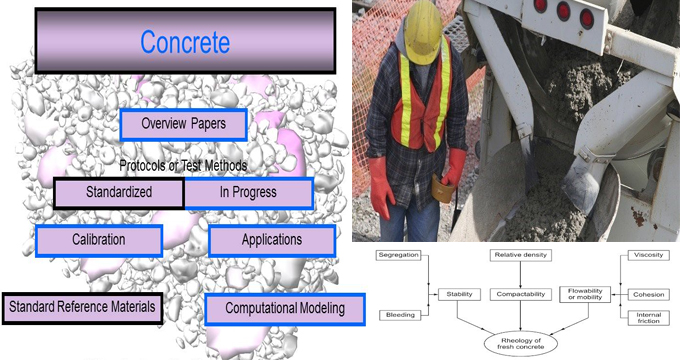
Study of Rheology and its various parameters for fresh concrete
From the study of rheology of concrete, the construction professionals gather necessary information on properties of fresh concrete like deformation, performance of mix, and arrangement of mixed concrete.
Rheology is a term that is specifically associated with fluids whose flow properties are quite problematical, as compared to fluids like liquids or gases. The word rheology refers to the study of the science of the flow and deformation of materials.
In the concrete study, the perception of rheology is used to examine the hardened concrete deformation, the performance of cement paste and slurries, handling and arrangement of mixed concrete in its fresh state. Therefore, rheology is utilized in all the conditions of concrete (fresh to hardened).
Rheology of Fresh Concrete: The rheology of fresh concrete depends on various crieterion like stability, mobility and compactability. These are the prime causes which calculate the suitability of a concrete mix. While handling rheology, the estimation is mainly dependent on stress, strain or rate of strain and the time factors.
Semi-rigid Materials: Materials same as mastic, asphalt, or combination of materials or layers.
Rigid Materials: Materials corresponding first class bricks, stones, slate, cement concrete etc.
Selection of Materials for Damp Proof Course in Buildings
Careful selection should be made so that the chosen material can operate as a strong damp proof course. The selection is made on the basis of the climate and atmospheric conditions, nature of structure and the condition where DPC should be delivered.
The stability, mobility and the compactability factors are stated with the forces or stresses which are related to the concrete mix. These occur because of the circulation of mechanical stresses inside it.
Stability Crieterion in Fresh Concrete Rheology: Stability refers to the property of a concrete mix as soon as the aggregate particles inside the mix contain a homogeneous dispersion and appear as a sampling in an arbitrary way. This property is presented throughout its conveyance, placement and compaction. Given below, two factors which calculate the stability of the mixture.
? Segregation
? Bleeding
The segregation is described as the phenomenon of the settlement of aggregate mixture in the uniform dispersion because of the poor concrete mix. The poor concrete mix is called as an insecure mix.

If the mix is expanded, it can withstand the failure through segregation that is based on the cohesion among the individual particles. Segregation is not restricted to wet consistencies alone. It is also shown in the dry mix.
In wet mix, the segregation mostly happens if the water content level in the mix fails to retain the aggregate in a well-distributed method during the course of transportation, placing and compaction. If the water-cement ratio is reduced, it becomes a brittle mix and leads to dry segregation. It mostly seems throughout its handling. Now the dry segregation is managed gradually throughout compaction. Throughout compaction with vibration, it obtains fluidity and cohesion with time along with resistance to shear.
Bleeding is a incident of water release in case the concrete mix contains an insecure mortar. The bleeding should be restricted or its chances of occurrence should be minimized.
To get more information, visit theconstructor.org

